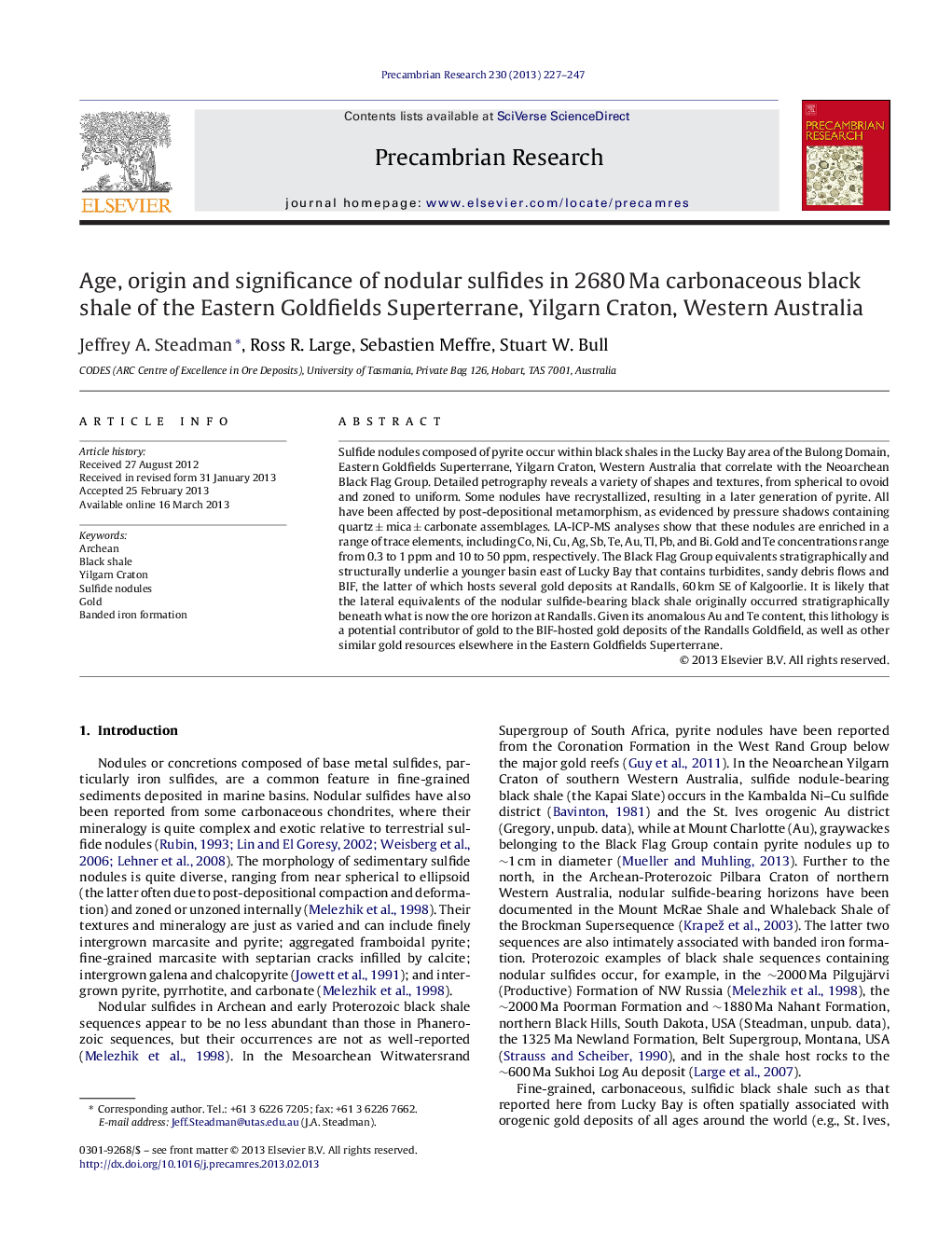| Article ID | Journal | Published Year | Pages | File Type |
|---|---|---|---|---|
| 4723250 | Precambrian Research | 2013 | 21 Pages |
•Pyrite nodules occur in 2680 Ma black shale of the Eastern Goldfields Superterrane.•The black shale sequence correlates to the Black Flag Group.•This succession stratigraphically underlies the Randalls BIF-Au district.•The nodules are diagenetic in origin and contain significant Au, As, and Te.•At least some of the gold at Randalls may have been sourced from the nodules.
Sulfide nodules composed of pyrite occur within black shales in the Lucky Bay area of the Bulong Domain, Eastern Goldfields Superterrane, Yilgarn Craton, Western Australia that correlate with the Neoarchean Black Flag Group. Detailed petrography reveals a variety of shapes and textures, from spherical to ovoid and zoned to uniform. Some nodules have recrystallized, resulting in a later generation of pyrite. All have been affected by post-depositional metamorphism, as evidenced by pressure shadows containing quartz ± mica ± carbonate assemblages. LA-ICP-MS analyses show that these nodules are enriched in a range of trace elements, including Co, Ni, Cu, Ag, Sb, Te, Au, Tl, Pb, and Bi. Gold and Te concentrations range from 0.3 to 1 ppm and 10 to 50 ppm, respectively. The Black Flag Group equivalents stratigraphically and structurally underlie a younger basin east of Lucky Bay that contains turbidites, sandy debris flows and BIF, the latter of which hosts several gold deposits at Randalls, 60 km SE of Kalgoorlie. It is likely that the lateral equivalents of the nodular sulfide-bearing black shale originally occurred stratigraphically beneath what is now the ore horizon at Randalls. Given its anomalous Au and Te content, this lithology is a potential contributor of gold to the BIF-hosted gold deposits of the Randalls Goldfield, as well as other similar gold resources elsewhere in the Eastern Goldfields Superterrane.
